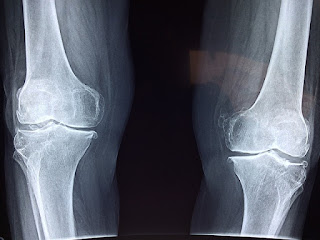Joint Replacement pain - Pain after joint replacement
When an artificial joint is fitted, the muscles and tendons need a few months to heal and adapt. Only then can they stabilize the new joint. However, full mobility and elasticity are not fully restored. A prosthesis remains an option – albeit for a joint that has previously caused problems.
I have metal in my body for 25 years
In general, complex joints such as the knee are more difficult to operate on. The ligaments should be tightened symmetrically so that the prosthesis is not too tight or too loose. How well a patient copes after joint replacement depends on the quality of the operation, but also on how fit someone was before the operation and how badly the joints were damaged.
Practicing specific movements and being active with the endoprosthesis are critical to success. Patients should know from the outset what to expect and what the prognosis is. Take the knee for example: more than 80 percent of prostheses remain in the body for 25 years or longer, but patient satisfaction is lower than with hip prostheses. But only 58 percent of them last long.
Joint Replacement Statisticschange lifestyle
Exercise, don't smoke, eat healthy. Obese patients should reduce their weight so that there is no extra load on the new joint.
98% of hip prostheses
Significantly improves the quality of life. Some patients suffer from residual symptoms such as abscess or infection. This operation is performed approximately 240,000 times a year.
up to 95% of patients are under the age of 50
A study from the United States found satisfaction with the outcome five years after shoulder joint replacement surgery. This percentage is higher for the elderly. Various prostheses are used less than 20,000 times per year.
80% of the patients are satisfied with the new knee replacement.
Significantly improves the quality of life. Some patients suffer from residual symptoms such as abscess or infection. This operation is performed approximately 240,000 times a year.
"Only the joint is new. Not the person around it," says Professor Karl-Dieter Heller, chief physician at the orthopedic clinic Herzogin Elisabeth Hospital in Braunschweig. We asked him:
Professor Heller, do exaggerated preoperative expectations make patients less satisfied?
Yes, and this attitude is driven by the media and advertising. Some manufacturers claim: You look younger, sportier, prettier with a prosthesis. And completely painless.
Should physicians better manage expectations?
With an artificial hip joint, it is easier and faster to achieve a higher degree of satisfaction than with a knee. Doctors should not raise any exorbitant expectations. When it comes to mobility and swelling, patients will definitely feel their knee for the next six months. It takes longer to reach maximum mobility. Through education, we can remove sorrows.
And if this is not enough?
Those affected require a lot of conservative treatment and medical care for long-term satisfaction. It is important to avoid early repeat surgery. They are performed only when all possibilities of non-surgical therapy have been exhausted.
This is what makes patients successfulchange lifestyle
Exercise, don't smoke, eat healthy. Obese patients should reduce their weight so that there is no extra load on the new joint.
98% of hip prostheses
Significantly improves the quality of life. Some patients suffer from residual symptoms such as abscess or infection. This operation is performed approximately 240,000 times a year.
up to 95% of patients are under the age of 50
A study from the United States found satisfaction with the outcome five years after shoulder joint replacement surgery. This percentage is higher for the elderly. Various prostheses are used less than 20,000 times per year.
When further treatment is needed: After about eight weeks, the joint is ingrown and mobile, and pain should be minimal. If you can't walk properly after three months or an infection develops, see a doctor! Repeat surgery only makes sense if the prosthesis causes symptoms.
Joint replacement does not provide immediate pain relief or full mobility. Getting used to the prosthesis requires patience and persistence. No one needs to suffer severe pain for months or years, but any re-operation should be carefully considered. For the knee, the number is less than 20 percent in the first 25 years.



Comments
Post a Comment